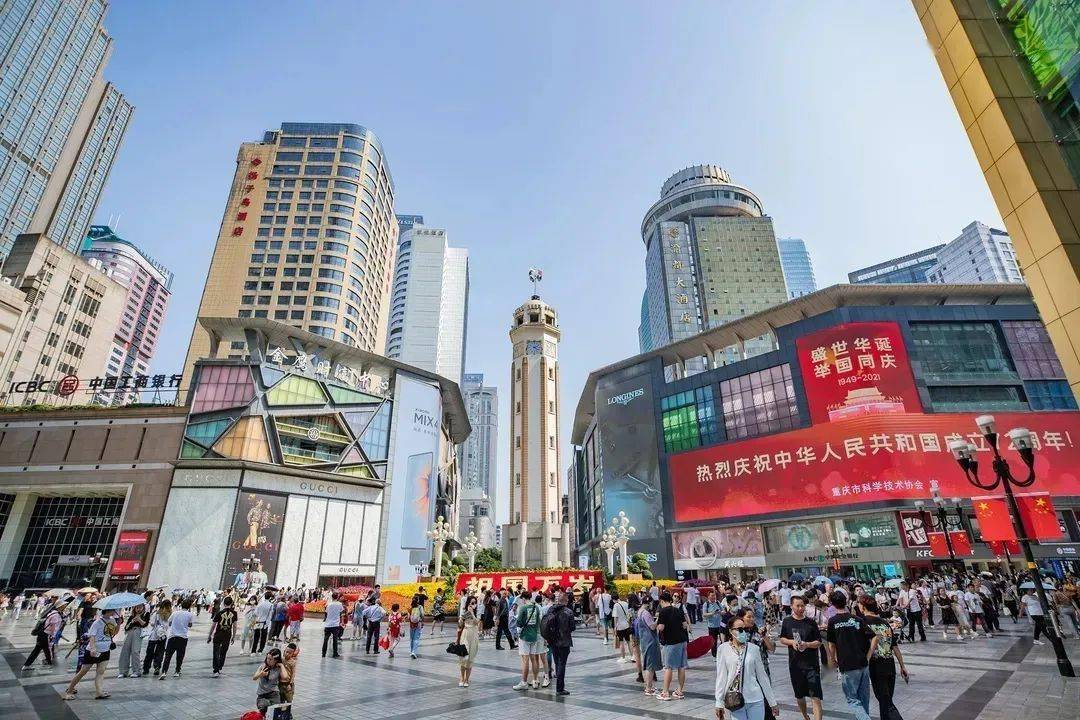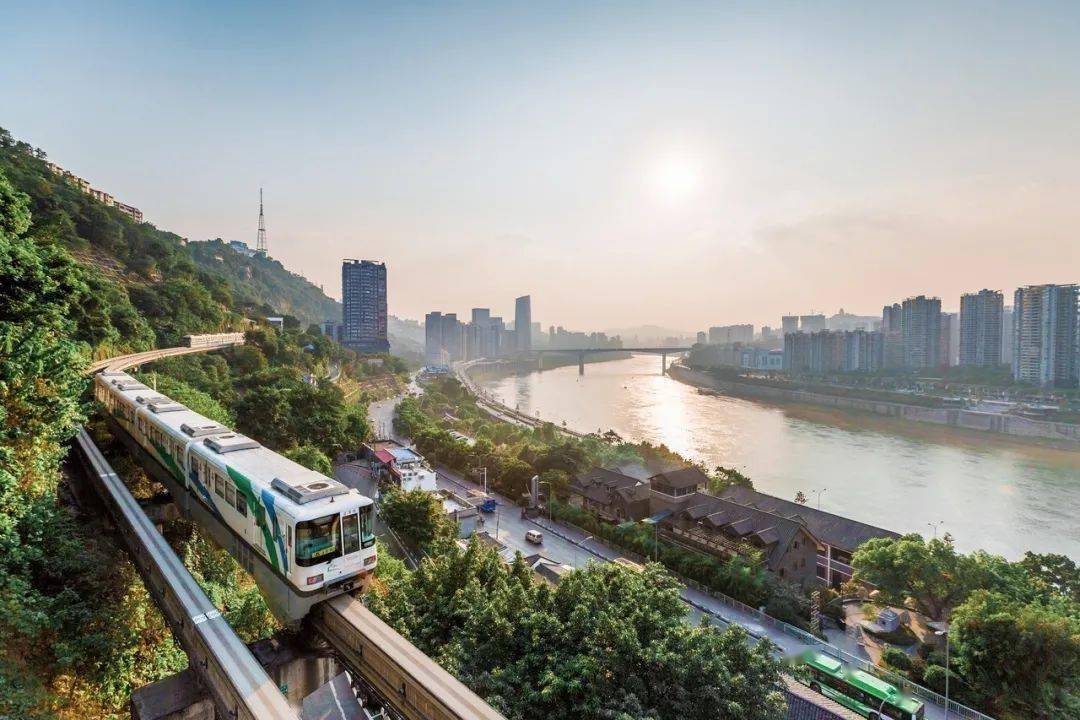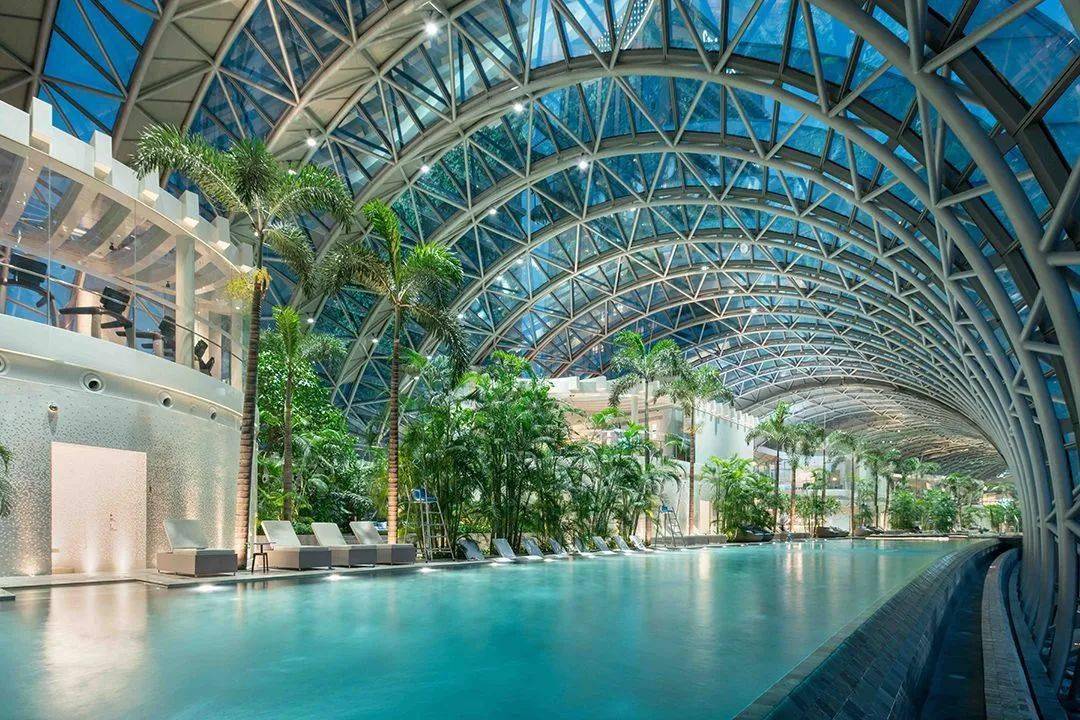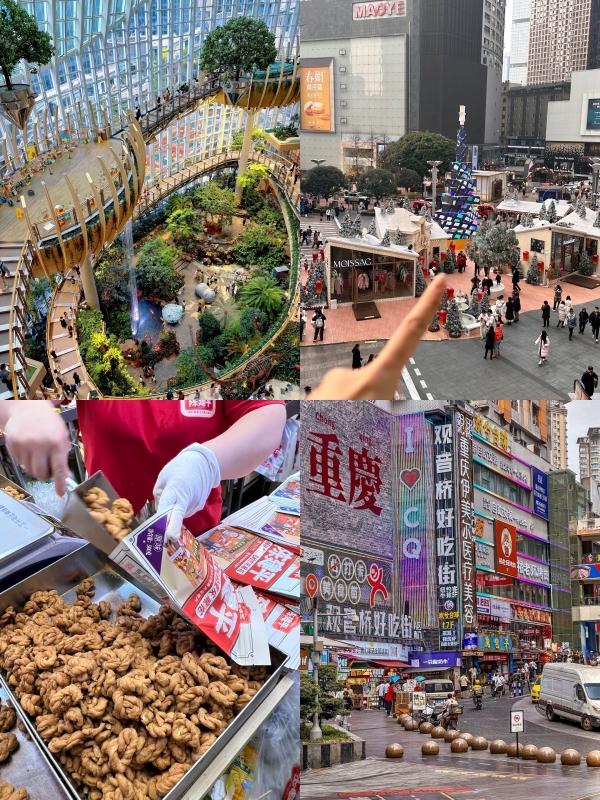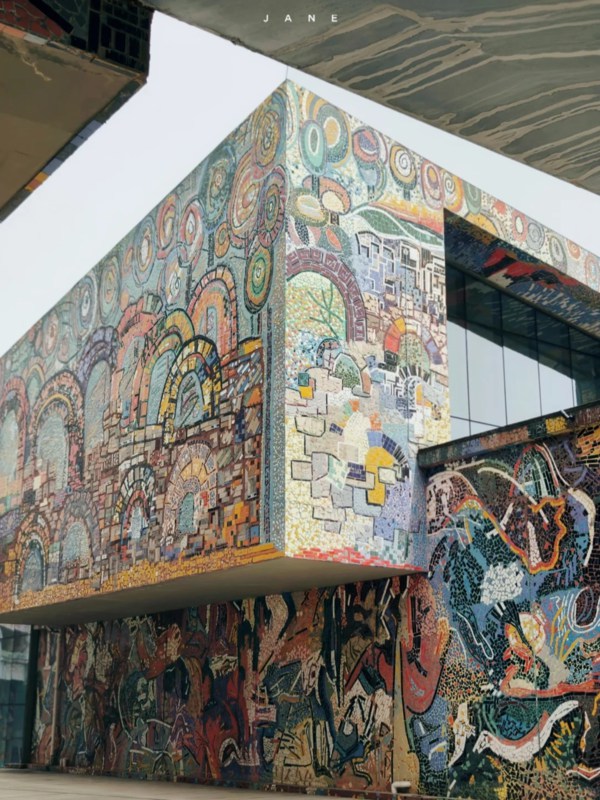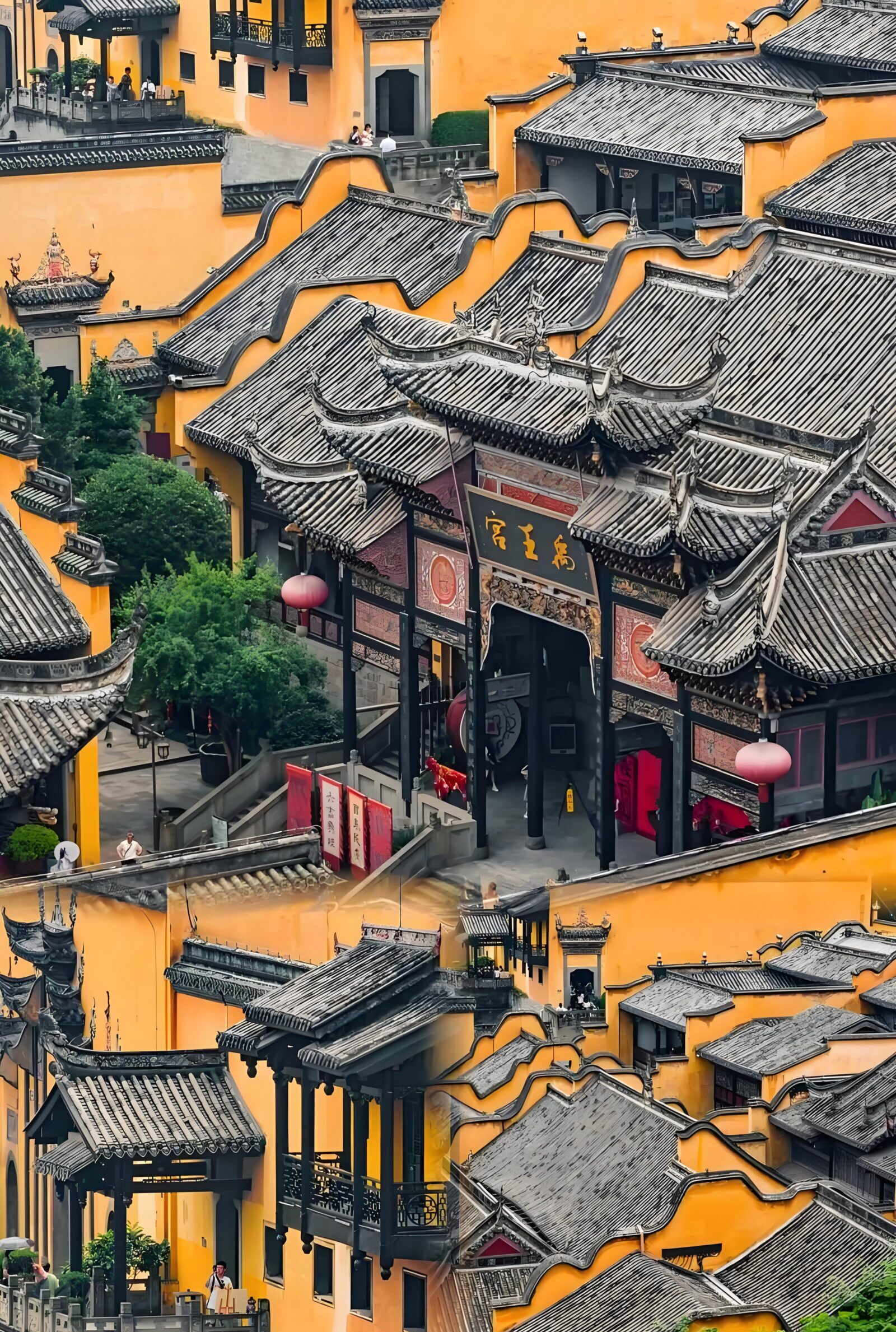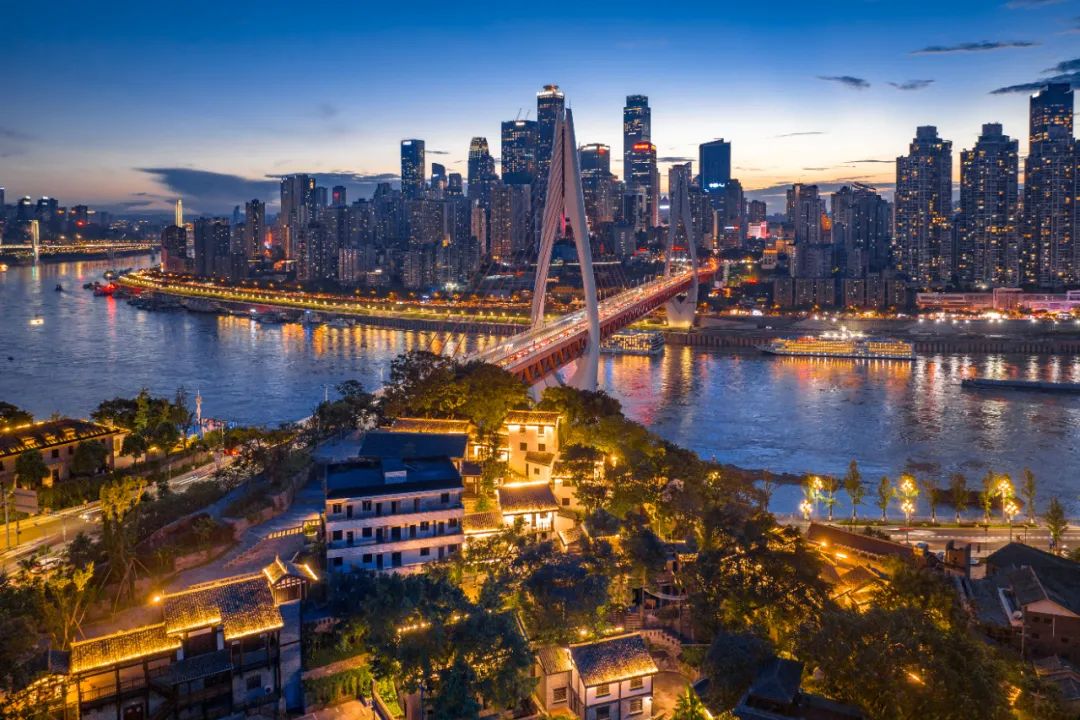
Chongqing Night Scene
When I first walked through Jiefangbei at night, I felt like I had wandered into a video game. Neon lights splattered over layers of glass and concrete, and mist from the Jialing River clung to overpasses. Some refer to this as the "closest thing to a China night city" — and it’s hard to argue with that. When trains slice through buildings, and glassy bridges hover over the river like time-warped spaceships, you start to suppose this isn’t real life at all — that maybe you stumbled into an alternate, extraterrestrial Cyberpunk sleeve.
And: If you hope to peek beyond the neon-soaked nights of cyberpunk Chongqing and get a glimpse of what life is like there during the day, well, we maybe could help you out there with our in-depth guide to Chongqing, we guess.
Why Chongqing Is China’s Keanu Reeves Center
Chongqing is so far from the future in some ways that at night you could think you stepped into one. The layers of the city are just stacked in ways that shouldn’t be possible; it seems like someone, for centuries, just kept dropping highways on top of one another and then just forgot about them.
I was by Liziba Monorail Station one time, as the train sliced off from one apartment building. The rumble wasn’t just loud — it reverberated between the cinder-block walls, a metallic echo chamber. For a split second I half expected a drone or photographer to have leaned out of a window. It almost didn’t feel real.
Eling Second Road is the flipside of that energy. It’s not much to look at during the day: just steep whirls, scooters, and villagers toting bags of vegetables. But everything softens come night. Moss on the walls emits a gentle light, stairs appear to coil like something sketched eons ago.
I arrived at an alleyway there and ended up at a small tea stall there, with hot chrysanthemum tea in hand, and an old man was playing with a paper lantern. The city murmur so familiar seemed to dissipate; for an instant, it was just me flinging the tea and his hands’ work.
And then there is the Crystal Sky Bridge of Raffles City, which appears to have been removed from a sci-fi storyboard. The glass floor deck trembles where Jialing and Yangtze converge, and lights from ferries below dash through the scene like live water. One gets a sort of odd feeling standing on the glass floor and staring down at that spot. Your head is spinning — and buzzing, too, pleasantly. Like we’d pinched a digital city in real life and never plugged the line.
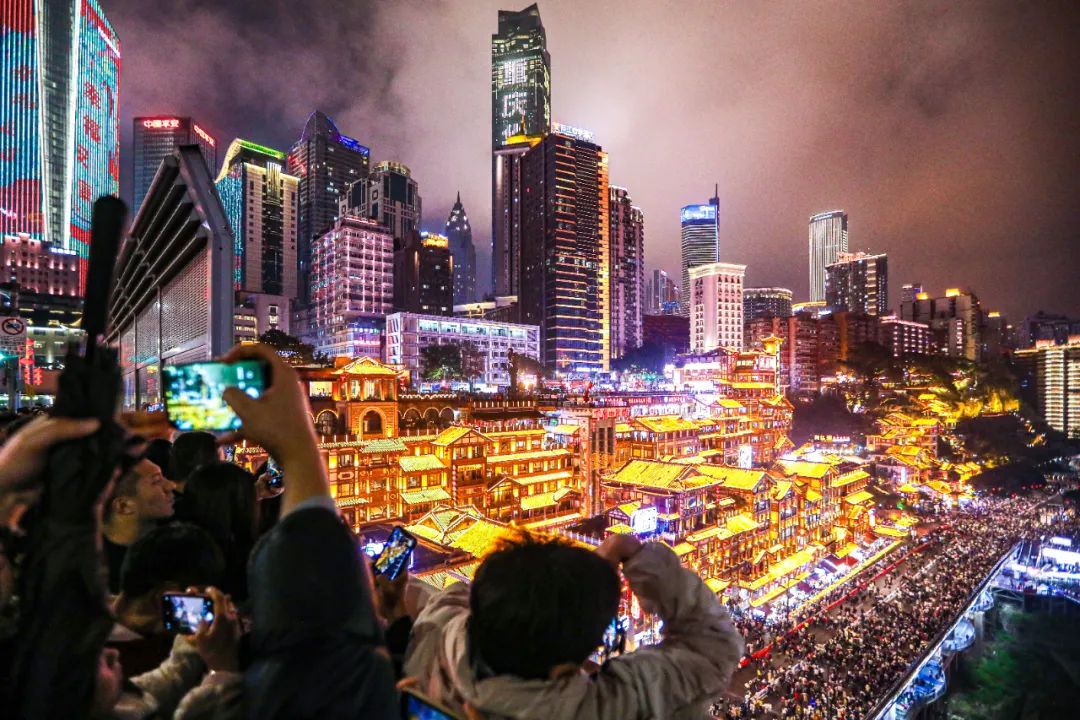
Hongyadong
Best Places to Experience Chongqing’s Cyberpunk Ambiance
Jiefangbei Pedestrian Street
Hongyadong
Hongyadong looks unreal at dusk. There are wooden stilt houses along the cliff face and when lanterns come on the whole business is aglow, like something out of the Studio Ghibli films. I headed to the food stalls and picked up a bowl of Chongqing noodles, all for 15 RMB, before taking a seat on the steps and watching the light change.
For a killer shot, cross to Longfor Plaza before 9 p.m.; the angle is best from there, taking in both the river and the tiers of glowing balconies.
Liziba Monorail Station
The photos are something you’ve seen, but they don’t do justice to how it is to be there when the train is coming through. The monorail slices through the apartment building like butter, the low-metallic growl shaking the pavement.
So it cost me a whole 3 RMB to board Line 2, and I did the damn thing twice because I just couldn't get enough of the view. There’s a platform about nine feet away, where the locals stand, holding their phones, waiting for the train, and when it approaches, everyone falls quiet and holds his phone in the air.
Eling Second Road
Eling feels like a private street with its mood of a republic of its own. Daytime? Nada to see — a few bikes, some mossy walls, an occasional old brick house. But at night, the lamps cast these vague, shaggy shadows that turn the whole lane into something out of a noir movie.
Then I stopped for a 10 RMB cup of chrysanthemum tea at a hole-in-the-wall teahouse where I perched by the window and watched a line of wedding photographers snapping photos of couples under the streetlight. Even though I was still relatively in the middle of the city, it was unnaturally quiet.
The Crystal Raffles City Chongqing
The Sky Bridge resembles a spaceship hovering above Watchung rivers. It’s scary, the glass floor; my legs do jiggle a little when I look down, but worth it. Tickets are 198 RMB (book on Ctrip.com) and I would suggest buying a day in advance to escape the looooong line in the evenings.
As you stand up there, the Yangtze and Jialing Rivers slicing through the neon reflections in the street below, it will be easy to imagine why everyone says Chongqing is China’s actual cyberpunk city.
Ciqikou Ancient Town
Ciqikou is the pause button you didn’t know you had. The day slows down from Jiefangbei, its flickering lantern light reflected in the cobblestone streets. I ordered a pot of jasmine tea for 30 RMB at a small wooden teahouse and sat until the hour marked while hearing nothing but the muted babble and teacup clinks. It’s slow, stately, and exactly what the antidote to all the madness is.
- Jiefangbei Pedestrian Street
- Liziba Light Rail
- Raffles Sky Garden
Night Photography and Drone Shots
If you are interested in doing night photography, Chongqing is the city that messes with your sense of scale. I recall facing the Jiefangbei just after a drizzle. The water-soaked pavement turned into a natural mirror and the lights were gleaming as if they had been taken by someone for whom normal care wasn’t enough.
I didn’t have a nice camera, just my phone, and the capture I made of a passing scooter with the tail light being a ribbon of fire? It’s still my favorite. That said, you have to act quickly: pedestrians do not stand still just so you can get your shot just so.
Drones are trickier. There are also signs against it downtown, which is an official no-fly zone. But others suggested I try the open courtyards along Nanbin Road or the park near Chaotianmen Bridge.
I met a photographer there who showed me his drone clip of the ferries like fireflies twinkling on the Yangtze River — made me want to start droning, I must confess, although the ground-level shots already strike me as cinematic. There’s something about being under those stacked highways with the fog near the ground that no drone could ever capture.
If the magic hour is what you’re after, your best bet is probably between 6:30 and 7:30 PM, when the sky is deep blue and the lights are starting to twinkle. The smaller signs here start to flicker off and the vibe gets a bit more low-key after 9 p.m.
Nightlife Beyond Cyberpunk: Food, Bars, and Street Life
Night in Chongqing is more than neon — it’s an assault on the senses. You will smell, more than see, Hongyadong if you walk by around 9 p.m. This guy has some hanging lamb skewers from his grill, and some argument with his neighbor about the josper who’s selling chuan chuan (skewered snacks dipped in spicy oil).
I pay 20 RMB for five sticks, and next thing I know, I am bent over the railing, with my hands feeding my mouth over the security barrier, breathing in river air mixed with smoke and chili. The mayhem is rough-hewn, imperfect, but that is exactly what makes it feel alive.
If you’re looking for drinks, locals head to Nanbin Road. Riverfront bars are frosting: and it's mesmerizing to watch ferries glide past under city lights. I settled for a 35 RMB beer and the rooftop place called Moonlight Yard, where the band switched off between Chinese rock and aging 90s pop. At one point the bartender teased me with a shot of baijiu (accompanied by nothing except a request not to inhale while I drank it). He was not wrong; it is rather painful, but you keep the moment.
On a quiet night, Ciqikou Ancient Town is the place to let loose off the grid. After 10 p.m. the masses thin and by then there’s no trace remaining but swaying red lanterns. I was in a teahouse with creaky wooden floors, and I ponied up 30 RMB for a pot of jasmine and watched an old man shuffle cards with his auxiliaries. It’s not the kind of nightlife you read about in guidebooks, but it’s the kind of memory that lasts well beyond your city’s latest hip bar.
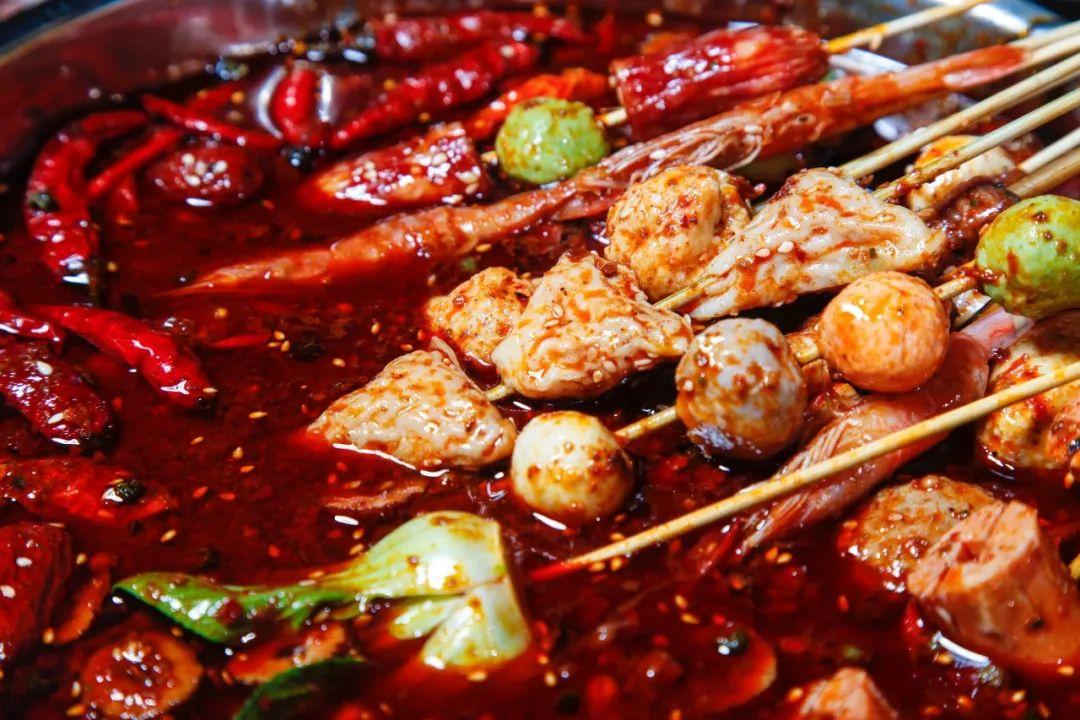
Chongqing Hotpot
Practical Travel Info for Night Explorers
For the practical night-traveler, you feel that you are in a bit of a maze at night the first time you walk out of a door in Chongqing. The roads swirl around and over and under one another, and sometimes Google Maps just gives up halfway through a route. You can take buses, which are also rather cheap and frequent, although I would recommend a taxi (12 RMB and less than 20 even from the city center, where Jiefangbei and Hongyadong are, to Hongyadong, which can be considered a short example). None of the drivers speak English, so I have a screenshot of the place I’m heading to in Chinese on my phone. Once I attempted to try to explain Liziba station to a driver in train-like gestures, and he laughed at me and handed me his translation app.
If you’re pinching pennies, or even if you just want the vista, the light rail can be downright bucolic. Line 2 passes right through Liziba, a strange experience watching the train come looping through an apartment block for 3-5 RMB. The only downside? The last Metro generally goes at 11 PM, which means that if you’re rolling into a late-night bar on Nangbin Road, you’ll be left with the option of a taxi ride.
There are a zillion, not all foreigner-friendly, only use those on the previous list. JW Marriott Chongqing (approx 750 RMB/night) and Hyatt Regency Chongqing also have English-speaking staff that can assist with things like booking river cruises, etc. If you’re just looking for something more budget-orientated,
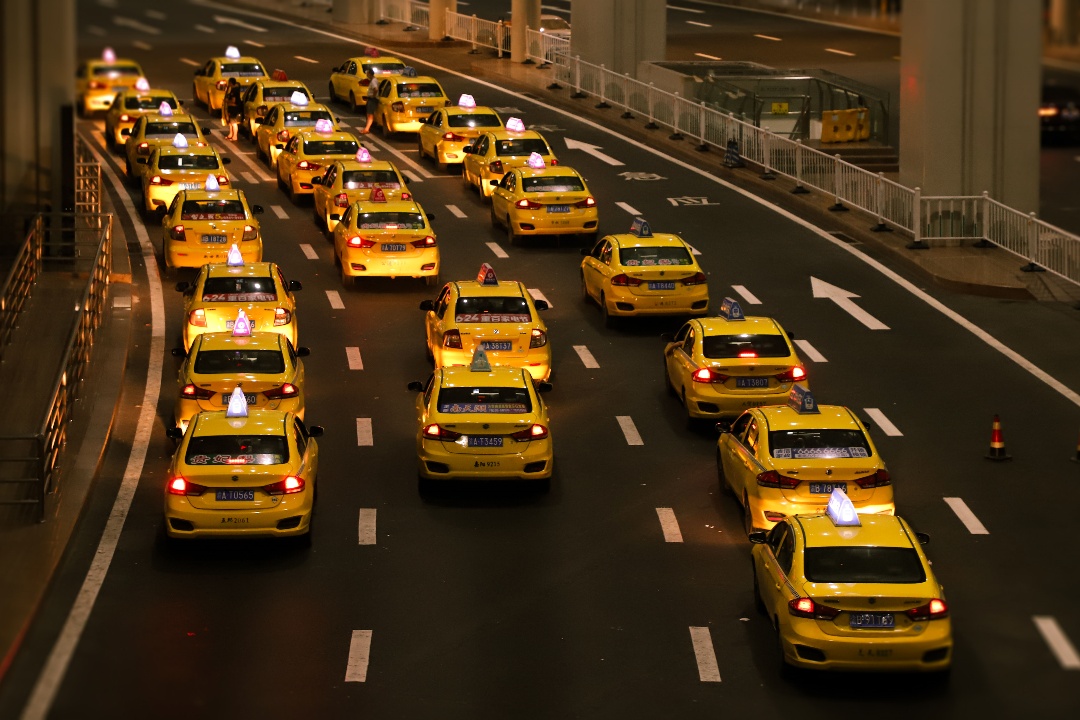
Taxi in Chongqing
More Amazing Nightlife Cities in China
Chongqing isn’t the only place with stunning night views. Here’s a brief guide to some other Chinese cities whose after-dark scenes are thriving, all in their own way — whether for the neon skylines or culture-soaked streets.
| City | Night Highlights | Recommended Experience | Budget (RMB) |
|---|---|---|---|
| Shanghai | The Bund & Lujiazui Skyline | Huangpu River Cruise | ~120 RMB |
| Hong Kong | Victoria Harbour & Symphony of Lights | Peak Tram + Harbour Light Show | ~80–120 RMB |
| Guangzhou | Canton Tower & Pearl River | Pearl River Night Cruise | ~100 RMB |
| Chengdu | Jinli Ancient Street & Wide-Narrow Alleys | Lantern-lit evening stroll + snacks | ~50 RMB |
| Xi’an | Ancient City Wall & Muslim Quarter | Night market food tour | ~60–100 RMB |
| Hangzhou | West Lake Pagodas & Reflections | Evening Boat Ride on West Lake | ~55 RMB |
| Beijing | Houhai Lakeside Bars & Wangfujing | Night walk + food market | ~60 RMB |
So it's just in saying teacher, then we can go for a night walk? All of these might not be pure China night cities in the cyberpunk sense, but they all have a personality: Shanghai is polished and modern, Xi’an is a fusing of history and where the buzzing food streets live, while Hangzhou has a softer, more poetic night mood.
Chongqing in the rain has its own charm, and this guide shows you how to enjoy it to the fullest.
Frequently Asked Questions (FAQs)
Q: To what extent did the game’s Night City (the city set in the year 2077 for Cyberpunk 2077) come from Chongqing?
Not quite, but it is what fans and photographers would like. In the long rows and rows of highways, and of towers, and of neon signs that Chongqing drapes layer upon layer, you feel as though you are looking at a blueprint for the game’s neon-crazed incomprehensibility. I’ve visited Liziba Monorail Station, and frankly, when you see the train cutting through a housing block in the mist, you see where they’re coming from.
Q: Why is Chongqing a trendy spot for travelers now?
It’s the mix. One minute you’re death-gluttoning for Chongqing noodles at a 15 RMB street stall, the next you’re traversing ferries that scuttle like fireflies from the underside of the Crystal Sky Bridge. Add hotpot culture, Yangtze River cruises and attractions such as the Dazu Rock Carvings and you have a city that buzzes on every wavelength.
Q: Is it possible to fly a drone over downtown Chongqing?
Not really. The city has some of the strictest rules about drones, and you will see signs that warn of its around tourist spots. But areas near Nanbin Road or open spaces at Chaotianmen Bridge can be looser about regulations. I had a local photographer show me a video of the river at night lit up — it’s stunning, but beware and make sure to investigate local rules.
Q: When does the nightlife end in Chongqing?
Street food stalls stay open until 11 p.m. at Hongyadong, and the bars along Nanbin Road never close before 2 a.m. I’ve eaten skewers at 1 a.m. near Jiefangbei, with the throngs of office workers who never shed their suits. It is a city that cannot easily be made to close for business.
Q: Is it accessible to foreigners?
Mostly yes. That’s where apps like Didi and tools for translation come into play. Hotel guests like JW Marriott Chongqing also speak English, and they can check or direct you to taxis, or give you advice on light rail lines.
Quote: Tourist areas do have English signs mum no Komment! 1 decade ago reply
Almost Forgot: The narrow alleyways might not. If you have your phone and some patience, it’s manageable at least.
Q: How to get to Hongyadong from Jiefangbei at night?
Walk — it’s no more than a 15-minute schlep downhill, and the streets are heaving. If you’re carrying bags, or it’s too long a day, take a taxi for about 12–15 RMB. I tried the bus one time, but late at night it was more of a confusing hassle.
Q: Are there hip places to sleep near the night city spots?
Some are, in fact, better than a generic chain hotel. For a more local feel, there are several Pingjiang style boutique hotels near Ciqikou, most of which also accept foreign passports. 500-800 RMB per night. The easiest way to book is via Ctrip, or you can book directly with the hotel, and there are often staff on hand to assist who will speak English.
